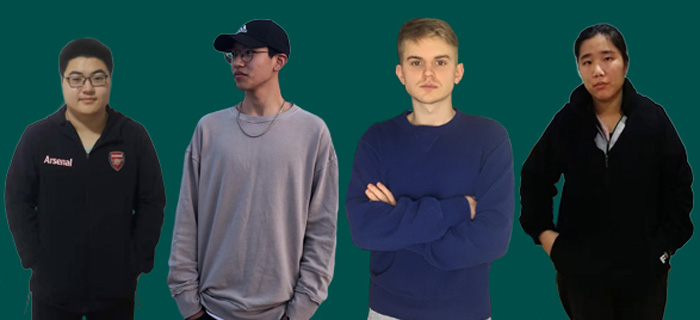
Student Projects
VE/VM450

Preresearch of high precision ranging scheme based on low-cost binocular camera
Instructors: Prof. Jigang Wu
Team Members: Aleksei Danli, Shinedul Purevdorj, Zhenyi Cai, Ting Shen
Project Video
Team Members

Team Members:
Aleksei Danli, Shinedul Purevdorj, Zhenyi Cai, Ting Shen
Instructors:
Prof. Jigang Wu
Project Description
Problem
In this age of technological advancements, automation is a large part of our everyday life. Distance measurement systems utilizing monocular cameras can only measure for a short range, with a 10-15% inaccuracy and limited robustness. The low accuracy ranging system hinders and slows the process of the machine by a significant amount. Other methods such as the LIDAR or RADAR sensors are prone to disturbances. Thus, we propose the use of a stereo vision image sensor using two monocular cameras connected to a system with a wide baseline. The use of a binocular camera can improve the robustness of the image, accuracy of the distance measurement, and the range of measurement.

Fig. 1 Image of an automotive tail lamp
Concept Generation
We generate our concept through a flow chart of what we are going to do to calculate the distance. Our hardware part are restricted by our sponsor, the total price of two CMOS cameras should be less then 500RMB. On the Fig. 2 the stereo system of two HIKVISION DS-U12i cameras with resolution 1920*1080.
In this project we mainly focus on the generation of our software parts.
On the Fig. 3 is a flowchart of our program.

Fig. 2 Hardware

Fig. 3 Overall flowchart
Design Description
Two cameras are set parallel with 1 m baseline. This setting simulates a car with cameras in both its front lamps.. For the software part, it basically contains three parts, which are stereo matching, object detection and distance calculation, and we choose python as our program language. The stereo matching consists two sub-functions: feature extraction and combination. We first use SIFT to do the feature extraction, then we can combine two images captured from cameras into one. Then we can detect some objects in this image. For this part, we consider the auto-driving case, and mainly focusing on detecting people and cars.
After detecting some persons or cars, we can just use a formula to calculate the distance. A user interface will show the result to customers Fig. 4.
After detecting some persons or cars, we can just use a formula to calculate the distance. A user interface will show the result to customers Fig. 4.

Fig. 4 Algorithm output
Validation
Validation Process:
For the real distance calculation the laser rangefinder was used for long range measurements. For the stereo matching and camera calibration procedure the size of the block and number of them was measured by a ruler.
For the real distance calculation the laser rangefinder was used for long range measurements. For the stereo matching and camera calibration procedure the size of the block and number of them was measured by a ruler.
Validation Results:
According to the algorithm output:
√Error rate <=5% (< 10 m )
√Cost < 500RMB
√Baseline = 1 m
√Resolution 1920 * 1080p
•Processing time 6-8 s
•Range > 10 m
√ means having been verified and · means to be determined.
According to the algorithm output:
√Error rate <=5% (< 10 m )
√Cost < 500RMB
√Baseline = 1 m
√Resolution 1920 * 1080p
•Processing time 6-8 s
•Range > 10 m
√ means having been verified and · means to be determined.

Fig. 5 Stereo calibration
Conclusion
In our project, we focus on using binocular cameras to measure the distance to the object and improve the accuracy of ranging. The novelty of our design is a wide baseline, which allow to place cameras into the right and left headlight. This also allows to achieve accuracy in ranging even with two inexpensive CMOS cameras.
Acknowledgement
Company Sponsor: Yue ping He (Senior Chief Engineer), Huayu Vision
Company Mentor: Shaolong Sui & Zishi Li, Builder [x]
Company Mentor: Shaolong Sui & Zishi Li, Builder [x]
Reference
[1] K. Shaw, “PBS Science Show NOVA Shines its Spotlight on Self-Driving Cars”, Robotics Business Review, 2020. [Online].
UM-SJTU JOINT INSTITUTE